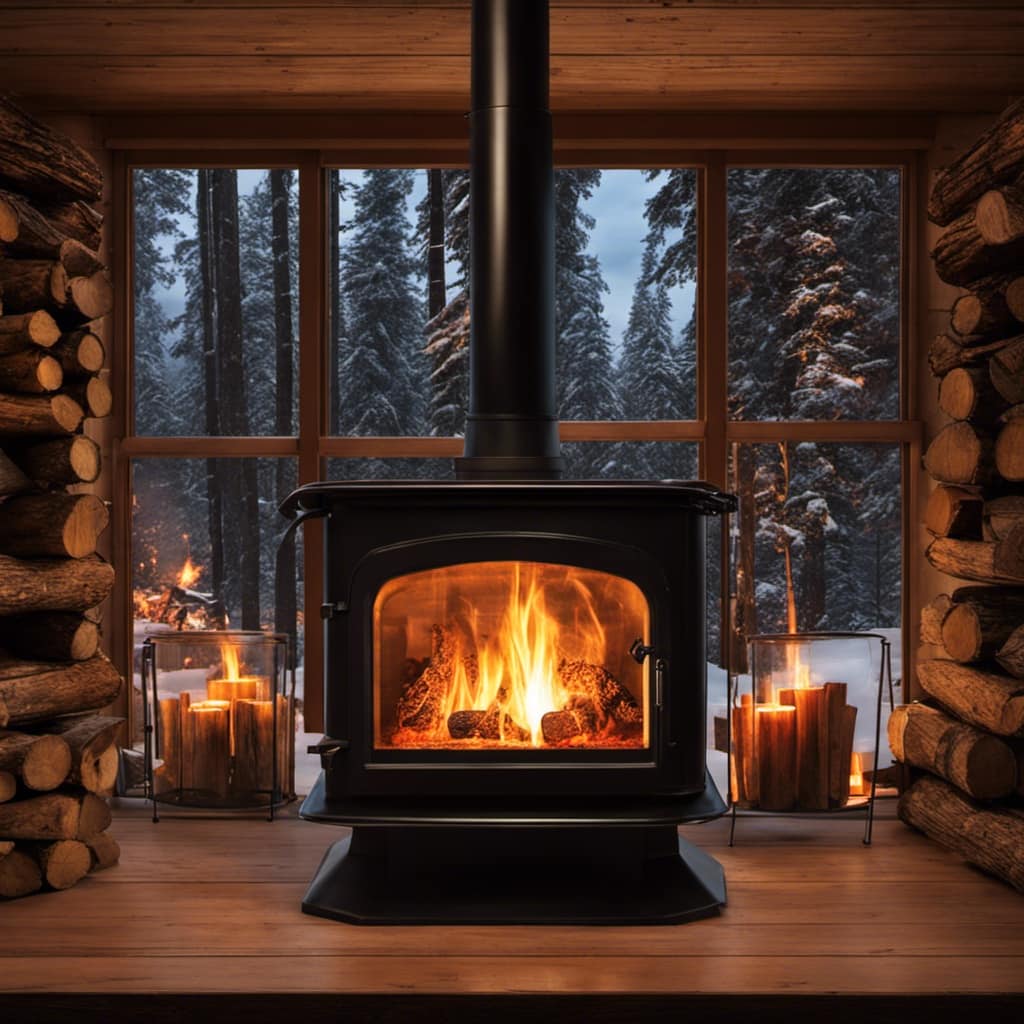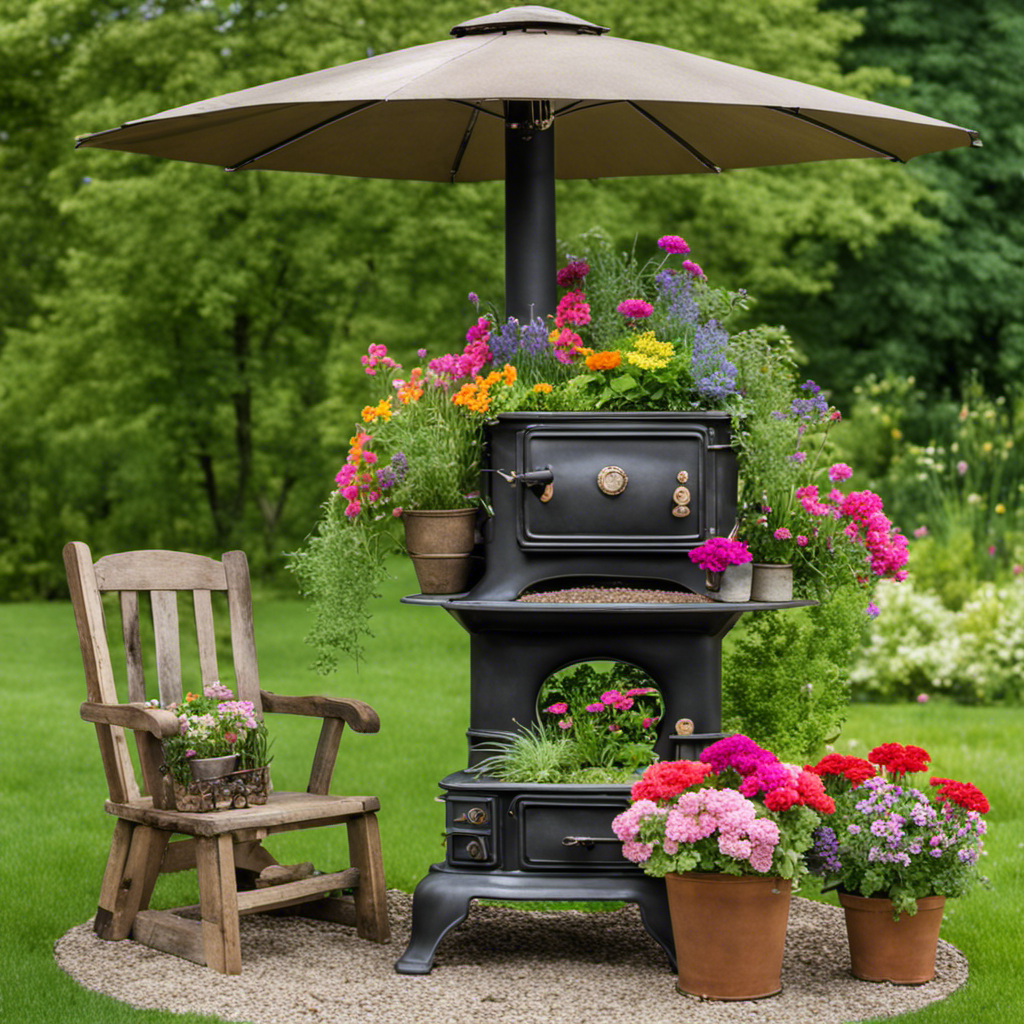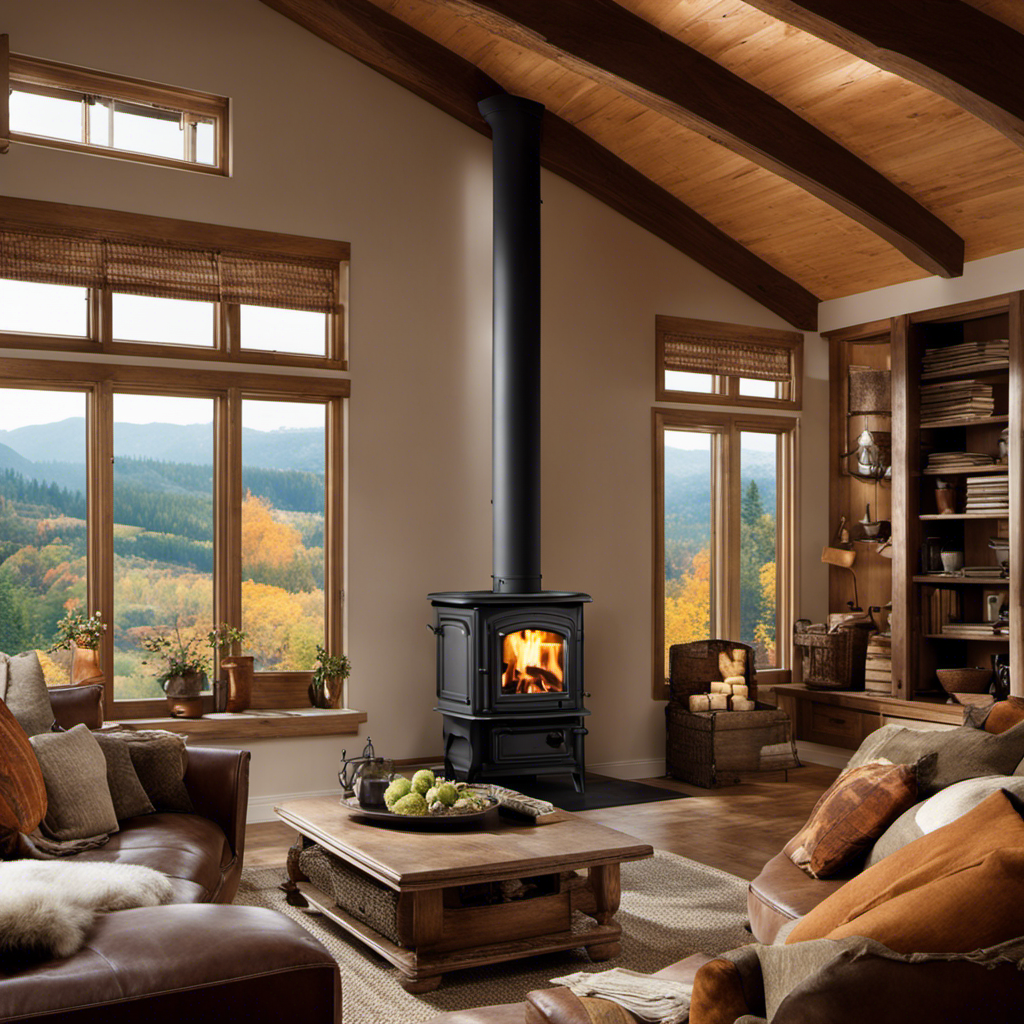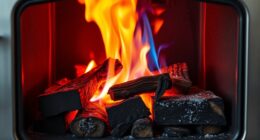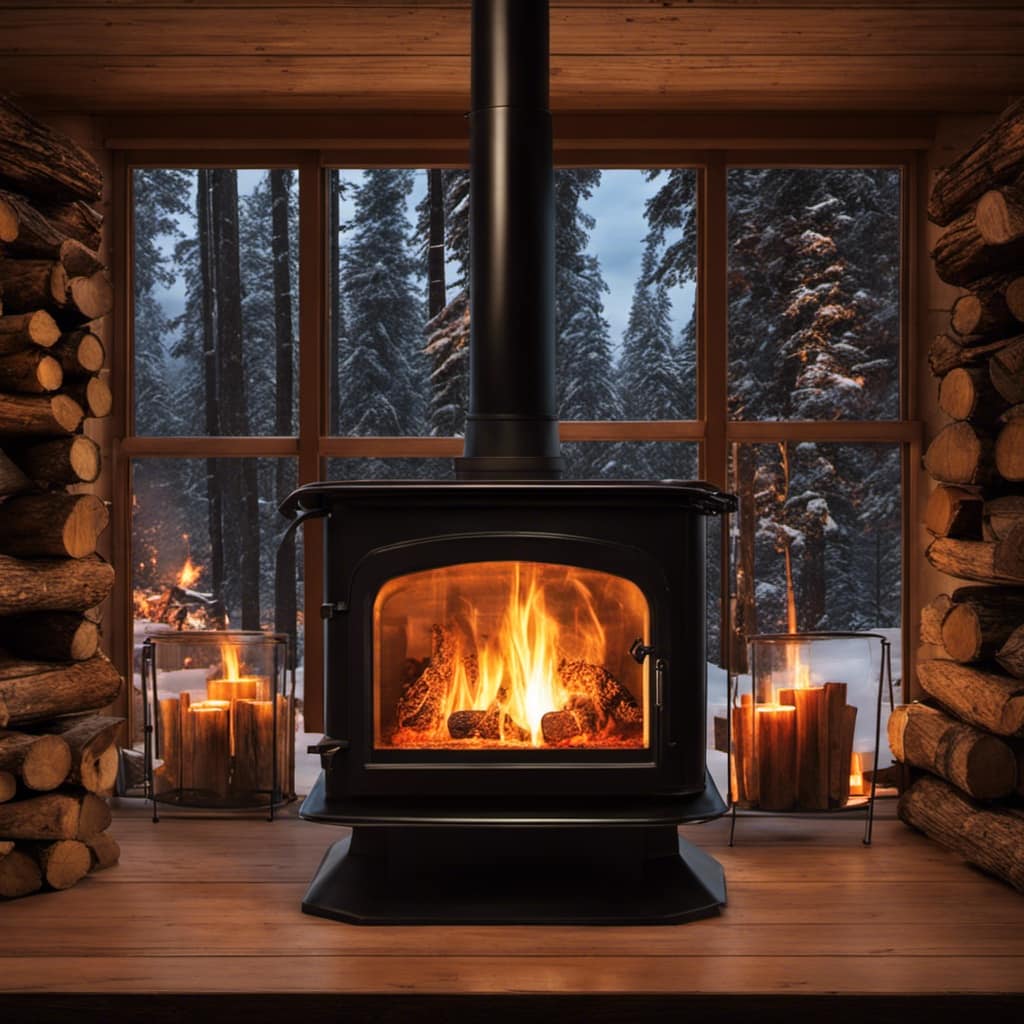
Cuddling up next to my wood stove on cold nights has always been a favorite pastime of mine, but recently, I’ve noticed something strange. After a few hours by the cozy fire, I am unexpectedly tired.
Intrigued by this phenomenon, I embarked on a quest to uncover the reasons behind my fatigue. In this article, I’ll explore the impact of indoor air quality, carbon monoxide levels, and potential allergens in wood stove smoke.
Join me as we unravel the mystery of why our beloved wood stoves may be leaving us feeling drained.
Key Takeaways
- Wood stoves release indoor pollutants that can cause fatigue, headaches, and difficulty breathing.
- Carbon monoxide produced by malfunctioning wood stoves can lead to poisoning and serious health risks.
- Extreme temperatures, whether too hot or too cold, disrupt sleep quality and can make you feel tired.
- Wood stove smoke contains allergens that can trigger respiratory symptoms and weaken the immune system, increasing the risk of chronic respiratory diseases.
The Impact of Indoor Air Quality
I feel tired when my wood stove is on because the indoor air quality is affected. Wood stoves can release various indoor pollutants that can negatively impact our health. When wood is burned, it produces particulate matter, carbon monoxide, nitrogen oxides, and volatile organic compounds.
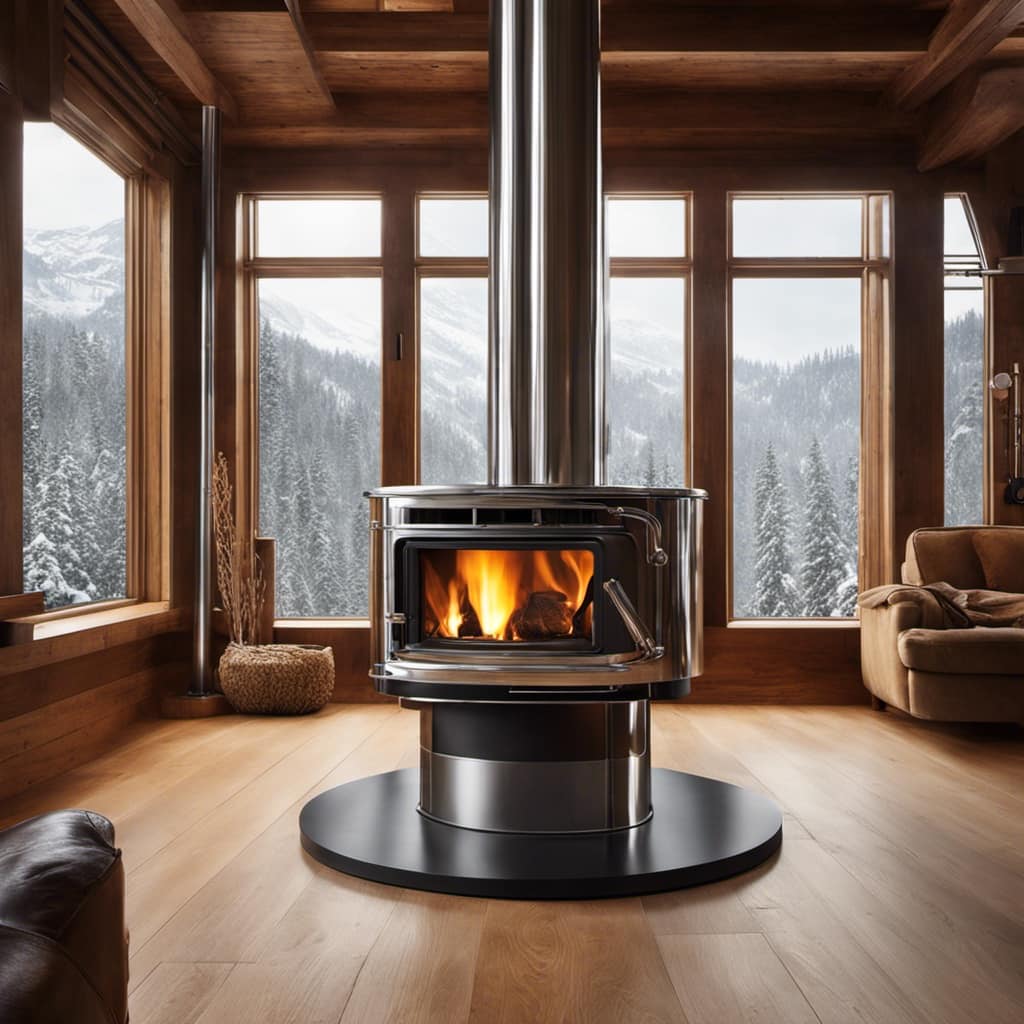
These pollutants can irritate the respiratory system, leading to symptoms such as fatigue, headaches, dizziness, and difficulty breathing. Particulate matter, in particular, can penetrate deep into the lungs and cause inflammation, which can further contribute to feelings of tiredness. Additionally, carbon monoxide can bind to hemoglobin in our blood, reducing its ability to carry oxygen to the body’s cells, resulting in fatigue and lethargy.
It’s important to ensure proper ventilation and regular maintenance of wood stoves to minimize the health effects of indoor pollutants.
Understanding Carbon Monoxide Levels
I need to be aware of the carbon monoxide levels in my home to ensure my safety. Carbon monoxide is a colorless, odorless gas that can be produced by malfunctioning appliances, such as furnaces, water heaters, and wood stoves. Exposure to high levels of carbon monoxide can lead to carbon monoxide poisoning, which poses serious health risks.
To understand and monitor carbon monoxide levels in my home, I can take the following steps:
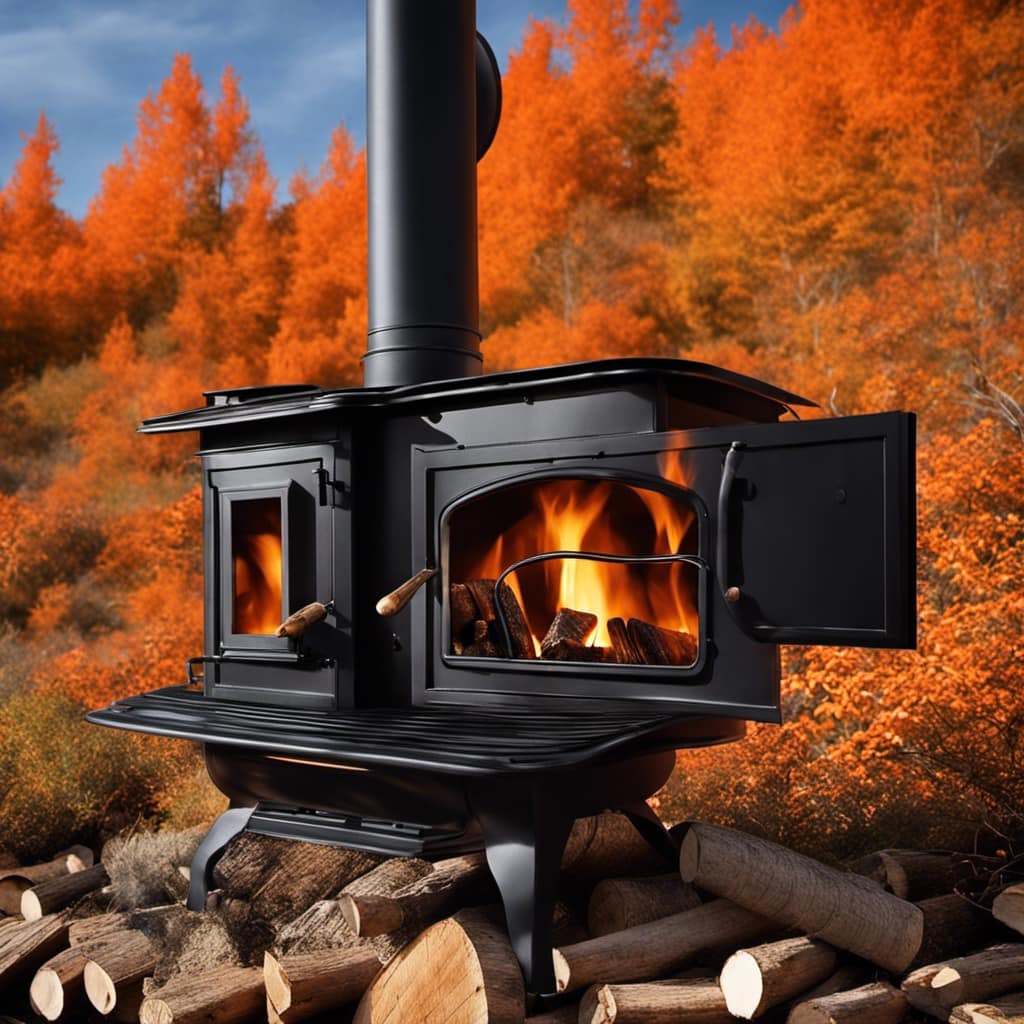
-
Install carbon monoxide detectors: These devices will alert me if carbon monoxide levels exceed safe limits.
-
Regularly maintain appliances: Properly maintaining and servicing appliances can help prevent carbon monoxide leaks.
-
Ensure proper ventilation: Good airflow and ventilation in the home can help dissipate any carbon monoxide that may be present.
-
Be aware of symptoms: Symptoms of carbon monoxide poisoning include headache, dizziness, nausea, and confusion. If I experience these symptoms, I should leave the premises immediately and seek medical attention.

Heat Regulation and Sleep Disruption
Excessive heat can disrupt sleep and leave me feeling restless and uncomfortable throughout the night. It’s important to understand the impact of temperature on our sleep patterns and circadian rhythm. When our body temperature is too high, it becomes difficult for us to fall asleep and stay asleep. Our body relies on a drop in temperature to initiate sleep, and excessive heat can interfere with this process.
To better understand the relationship between temperature and sleep, let’s take a look at the following table:
| Temperature | Sleep Quality |
|---|---|
| Too Hot | Poor |
| Comfortable | Good |
| Too Cold | Poor |
| Optimal | Excellent |
| Fluctuating | Disrupted |
As the table shows, extreme temperatures, whether too hot or too cold, can negatively impact our sleep quality. It’s important to create a comfortable sleeping environment with optimal temperature to promote better sleep and maintain a healthy circadian rhythm.
Potential Allergens in Wood Stove Smoke
Breathing in potential allergens from wood stove smoke can trigger respiratory symptoms and make me feel uncomfortable. Wood stove smoke contains various particles and chemicals that can negatively impact respiratory health. Here are four potential health effects of wood stove smoke:
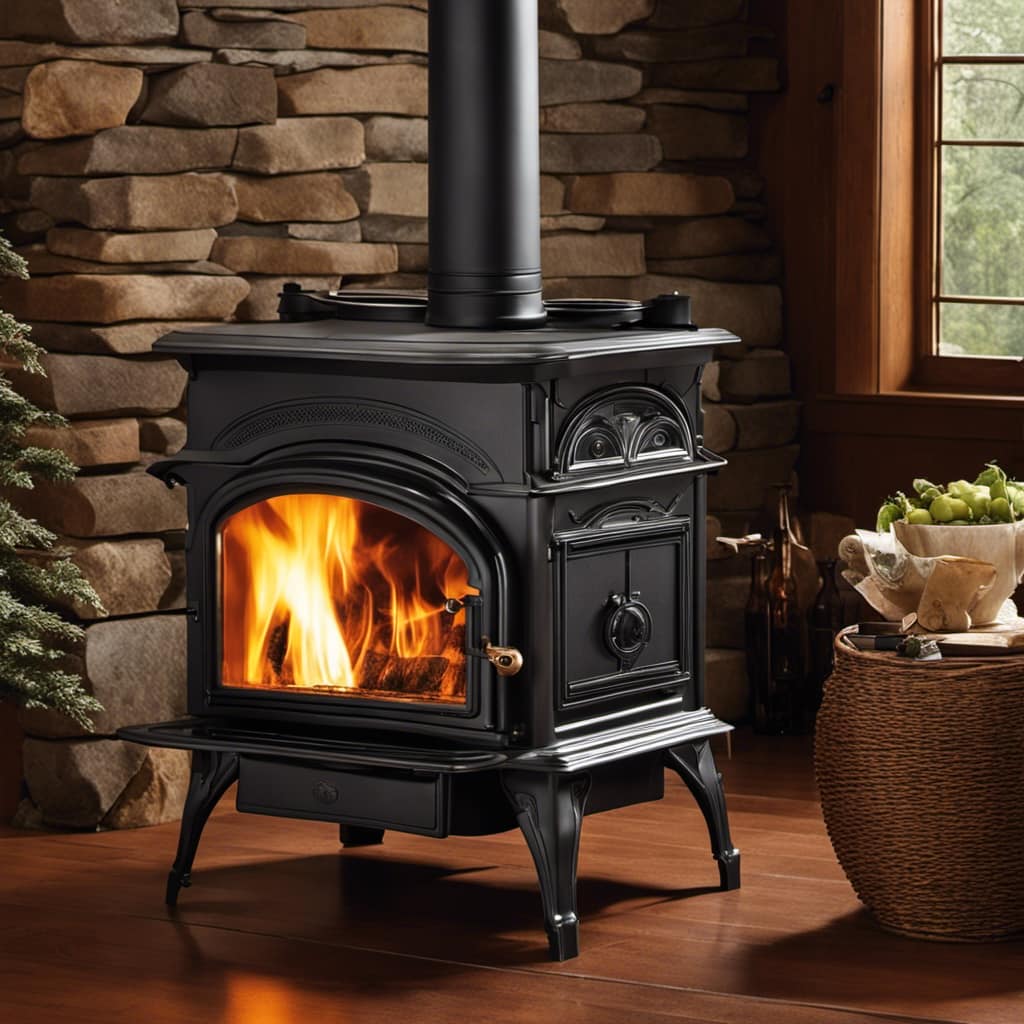
-
Irritation: Wood smoke can irritate the respiratory tract, causing symptoms such as coughing, wheezing, and shortness of breath. These symptoms can be particularly problematic for individuals with pre-existing respiratory conditions like asthma or chronic obstructive pulmonary disease (COPD).
-
Allergic reactions: Some people may have allergies to specific wood types or the compounds released during combustion. These allergies can manifest as sneezing, nasal congestion, itchy eyes, and skin rashes.
-
Increased susceptibility to infections: Wood smoke can weaken the immune system’s ability to fight off respiratory infections. This can lead to an increased risk of developing respiratory illnesses such as bronchitis or pneumonia.
-
Long-term health risks: Prolonged exposure to wood stove smoke can contribute to the development of chronic respiratory diseases and increase the risk of cardiovascular problems.

It’s important to take steps to minimize wood stove smoke exposure, such as ensuring proper ventilation and using dry, seasoned wood. If respiratory symptoms persist or worsen, it’s essential to consult a healthcare professional for proper evaluation and guidance.
Psychological Factors and Fatigue
Feeling tired and fatigued can be influenced by various psychological factors, such as stress and anxiety. When we experience high levels of stress, our body releases cortisol, a hormone that can disrupt our sleep patterns and lead to fatigue. Not only does stress affect our ability to fall asleep, but it can also cause us to wake up frequently during the night.
Additionally, stress can contribute to a racing mind, making it difficult to relax and unwind before bed. Another psychological factor that can impact our fatigue levels is the impact of noise on sleep quality. Loud noises, such as traffic or construction, can disrupt our sleep cycles and prevent us from getting the restful sleep we need. This disturbance in our sleep can result in feelings of tiredness and fatigue throughout the day.
Frequently Asked Questions
Can Wood Stove Smoke Cause Long-Term Health Problems?
Wood stove smoke can have detrimental effects on respiratory health. Prolonged exposure to the smoke can lead to respiratory diseases. It is important to ensure proper ventilation and take necessary precautions when using a wood stove.
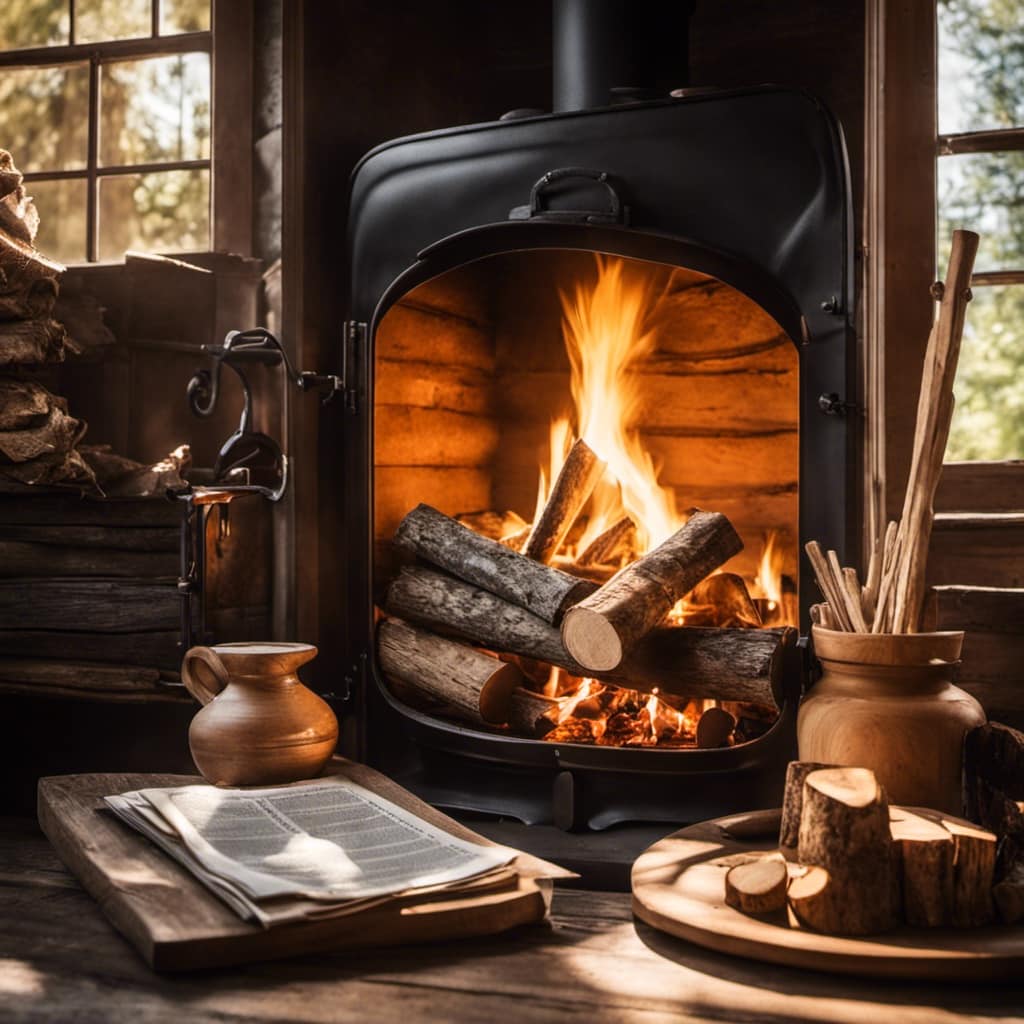
How Can I Improve the Air Quality in My Home When Using a Wood Stove?
Improving ventilation and using air purifiers are two effective ways to improve air quality in your home when using a wood stove. They help reduce the amount of smoke, particulate matter, and other pollutants in the air.
Are There Any Specific Types of Wood That Produce Less Smoke and Potential Allergens?
There are specific types of wood for efficient burning that produce less smoke and potential allergens. Regular wood stove maintenance tips can also help improve air quality and reduce fatigue caused by the wood stove.
Can the Carbon Monoxide Levels From a Wood Stove Be Detected Without a Carbon Monoxide Detector?
Yes, carbon monoxide levels from a wood stove can be detected without a carbon monoxide detector. However, it’s crucial to prioritize carbon monoxide safety by ensuring proper wood stove ventilation and using a detector for added protection.
Are There Any Specific Psychological Factors That Can Contribute to Fatigue When Using a Wood Stove?
Psychological effects can contribute to fatigue when using a wood stove. Factors like anxiety, stress, and poor sleep can worsen tiredness. To manage fatigue, prioritize self-care, practice relaxation techniques, and ensure a well-ventilated space.
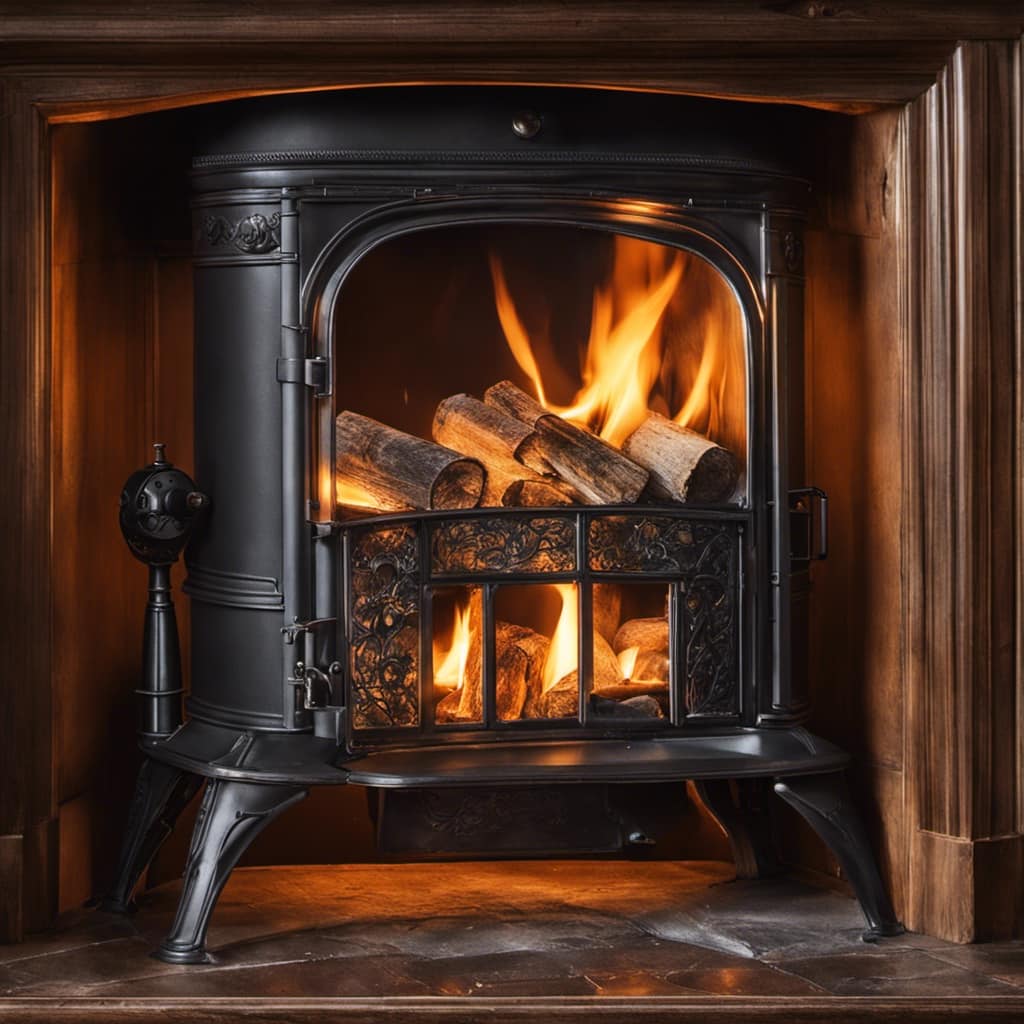
Conclusion
In conclusion, the tiredness experienced when using a wood stove can be attributed to several factors. First, the impact of indoor air quality plays a significant role. Poor ventilation and the accumulation of smoke and pollutants can lead to fatigue. Second, carbon monoxide levels can also contribute to tiredness. This odorless gas can build up in poorly ventilated areas and cause drowsiness.
Additionally, heat regulation can affect energy levels. A wood stove may provide intense heat initially, causing discomfort and tiredness. On the other hand, if the stove does not provide enough heat, the body may struggle to maintain a comfortable temperature, leading to fatigue.
Furthermore, potential allergens in wood smoke can also contribute to tiredness. Individuals with respiratory conditions or sensitivities may experience fatigue as a result of exposure to these allergens.
Finally, psychological factors can play a role in the tiredness associated with using a wood stove. The stress of managing the stove, constant monitoring, and the fear of potential accidents can contribute to mental fatigue.

Just like a weary traveler seeking rest after a long journey, our bodies can become fatigued from the effects of a wood stove. It’s important to be mindful of these factors and take steps to ensure a safe and comfortable environment when using a wood stove.
Growing up surrounded by the vast beauty of nature, Sierra was always drawn to the call of the wild. While others sought the comfort of the familiar, she ventured out, embracing the unpredictable and finding stories in the heartbeat of nature.
At the epicenter of every remarkable venture lies a dynamic team—a fusion of diverse talents, visions, and passions. The essence of Best Small Wood Stoves is crafted and refined by such a trio: Sierra, Logan, and Terra. Their collective expertise has transformed the platform into a leading authority on small wood stoves, radiating warmth and knowledge in equal measure.

